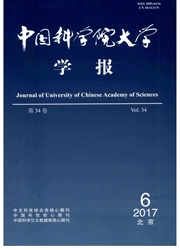

 中文摘要:
中文摘要:
光化学植被指数PRI定义为531nm和570nm处反射率的归一化植被指数,这一指数能够成功的估算叶片尺度、冠层尺度和景观尺度的光能利用率LUE,进而可以提高净初级生产力NPP的估算精度,因而PRI有着广阔的应用前景.但是,很多干扰因素会对建立PRI和LUE的关系产生影响,并且随着尺度的变化,干扰因素也在变化.因此,研究不同尺度下各种干扰因素对PRI的影响就显得更加必要和紧迫.基于这一点,利用PROSPECT和SAIL模型分别对叶片尺度和冠层尺度影a向PRI的干扰因素进行了敏感性分析.结果表明,在叶片尺度上,叶片的PRI对叶肉结构参数Ⅳ和叶绿素浓度(Cab)变化有着较高的敏感性,对于叶片的干物质浓度(Cm)和等效水厚(Cw)的变化敏感性弱;在冠层尺度上,叶面积指数、叶倾角分布、太阳高度角以及观测天顶角都会引起冠层PRI的变化.土壤类型对冠层的PRI不起决定作用,冠层自身的性质才是冠层尺度PRI的决定因素.
 英文摘要:
英文摘要:
The photochemical reflectance index (PRI) which is defined as a normalized difference index relating two narrow reflectance wavebands at 531nm and 570nm provides a reliable method to estimate light use efficiency (LUE) at the leaf, canopy and sight scales. Therefore, PRI opens a new era for estimating Net primary productivity (NPP) in a relatively high precision. However, a number of disturbances which change with scales will influence the relationship between PRI and LUE. Therefore, it is of great necessity and urgency to explore the influences of different disturbances at different scales on the relationship between PRI and LUE. In this analysis, sensitivity study was carried out at leaf and canopy scale based on PROSPECT and SAIL model respectively. The results proved that leaf PRI was sensitive to leaf biochemical components as leaf mesophyll structure parameter and chlorophyll a + b content while being insensitive to dry matter content and equivalent water thickness. At canopy scale, canopy PRI was much influenced by leaf area index, leaf angle distribution, sun zenith angle and view zenith angle. Canopy PRI depended on the intrinsic characteristic of canopy rather than the soil type of background.
 同期刊论文项目
同期刊论文项目
 同项目期刊论文
同项目期刊论文
 期刊信息
期刊信息
